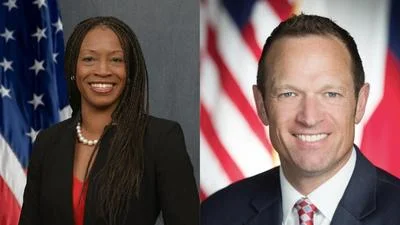Two new executives will be joining the ranks of the United States Postal Service (USPS). On April 30, President Trump posted on Truth Social, “I will be nominating Anthony Lomangino to the U.S. Postal Service Board of Governors. He built one of the most successful sanitation businesses in the country. He knows how to fix a problem — and the Postal Service has many!” Then, on May 9, the USPS announced that David Steiner (FedEx board member and former CEO of WM) will be the next Postmaster General.
As prominent figures with sanitation industry experience, Lomangino and Steiner will hopefully be able to apply their business know-how to America’s mail carrier. The USPS loses billions of dollars per year and desperately needs leadership that knows how to balance the books, retain workers, and maintain low prices for consumers.
Lomangino began his career in the waste industry by joining Allied Sanitation, and his profile quickly rose. He played a pivotal role in transforming the company into Star Recycling, which became the 14th largest privately-owned solid waste management company in the United States before its sale in 1996. In 1999, Lomangino founded Southern Waste Systems (SWS) and its affiliate, Sun Recycling, in South Florida. Under his leadership, SWS expanded to 12 facilities and employed over 750 people, focusing on recycling construction and demolition materials.
Lomangino’s waste management career has not been without controversy. WM (formerly known as Waste Management) — a leading waste management company — bought SWS in 2016, and Lomangino’s former partner “Alligator” Ron Bergeron alleged that Lomangino was in cahoots with WM to kneecap Bergeron’s rival business. These claims have proven flimsy, and judges have rejected Bergeron’s antitrust arguments. Not only was the acquisition legally legitimate, but consolidation has resulted in WM running a more capable and cost-effective business. WM has been able to keep otherwise-surging labor costs under control, and retention rates are on the rise while business is booming.
WM’s success is likely why President Trump tapped David Steiner to be the latest Postmaster General. Steiner served as CEO of WM from 2004 to 2016, leading the company through a significant transformation following a major financial scandal in the late 1990s. His leadership was pivotal in restoring the company's credibility and financial health. He streamlined operations, improved safety records, and enhanced employee morale, effectively repositioning WM as a leader in the recycling sector. Since then, he’s gained significant experience in the delivery and parcel sectors.
Compare this record of success to the USPS’ sorry status quo. The agency is losing gargantuan sums of money, and there’s no end in sight. After losing $9.5 billion in fiscal year (FY) 2024, the USPS is slated to lose another $6.9 billion in FY 2025. An obvious source of this red ink is the agency’s bloated labor costs, which account for roughly 80 percent of total USPS expenses in any given year. Rather than gradually replacing costly career hires with less expensive temporary workers, the agency is doubling down on converting temporary workers — also known as “pre-career” workers — to permanent staff. And according to a recent report by the Inspector General (IG), the USPS isn’t even taking basic steps to cut down on attrition rates for temporary hires.
USPS is not taking basic steps to keep its temporary workforce in the building. The USPS’ 10-year strategic plan (delivered in 2021) identified “unacceptably high rates of pre‑career employee turnover” as a key issue plaguing the agency and prioritized stabilizing the workforce, including a reduction of pre‑career workforce turnover by 50 percent. Unfortunately, pre-career turnover has actually increased since the 10-year plan was published. The IG notes that, from FY 2022 to FY 2024, the average nationwide pre-career retention rate for the first year of employment dropped from 52.8 percent to 43.7 percent.
The good news is that the USPS created a pilot program called the “511 Initiative” to address these turnover-related concerns. The bad news is that, according to the IG, “the Postal Service has not expanded its pre‑career pilot site locations since 2022 and did not create any new pre‑career retention pilot programs in fiscal years 2023 or 2024.”
To make matters worse, the IG “found the 511 Initiative was not fully understood nationwide and challenges exist with pre‑career employees receiving coaching and feedback from facility management.” That’s a shame, because pre-career retention was noticeably better in places where the USPS implemented the initiative and ensured everyone was on the same page about the program.
It's up to business-savvy leaders such as Steiner and Lomangino to reverse course and increase the USPS’ retention of workers that will deliver for taxpayers and consumers. The new executives have their work cut out for them, but hopefully they have what it takes to turn the USPS around.
Ross Marchand is a senior fellow for the Taxpayers Protection Alliance.









